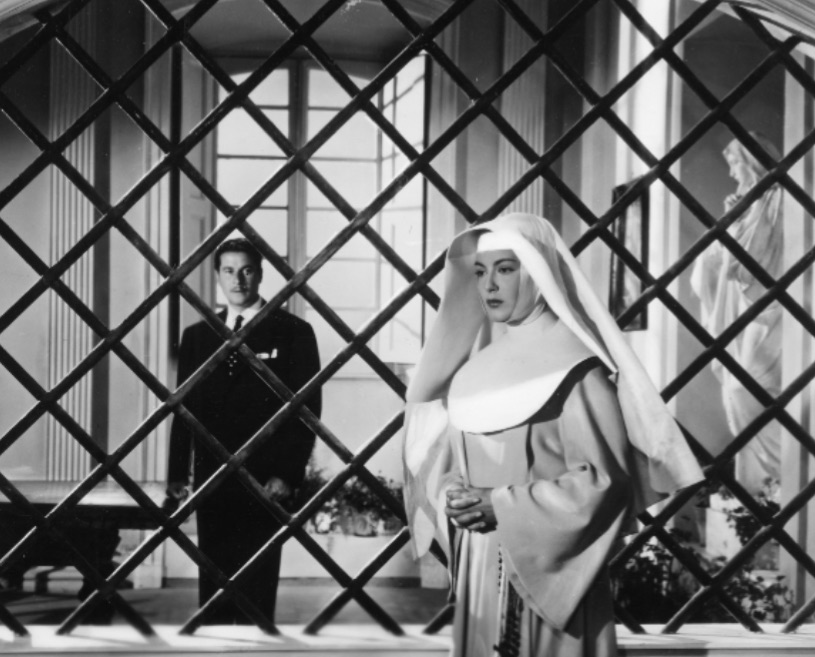Matarazzo. Popular romances

…Je suis très heureux que vous consacriez cet ensemble a Matarazzo, que je considère, depuis très longtemps, comme le plus grand metteur en scène italien
Jacques Lourcelles, May 2007
What an extraordinary compensation these words would have been for Raffaello Matarazzo, neglected master of Italian popular cinema, triumphant with audiences of the Fifties, neglected or reviled by critics of any ideological inclination, rehabilitated by a certain bold group in the Seventies, for some years re-launched and ground out by a huge tv exploitation, and dropped again into condescending oblivion. The cineaste of aching carnal passion, of voluptuous atonements, of salvationary returns to order, Matarazzo entered cinema in the Thirties, the era of Camerini and Blasetti, of “white telephones” and of “directors with boots”: he, on the other hand, was “the director who raised his hat to the extras” (Tatti Sanguineti), a quiet man, a nice gentleman with a corpulent Hitchcockian profile, “the most intelligent of us all, with a real culture, an autentic Crocian” said Riccardo Freda to Francesco Savio, “victim only of his own paralysing fear of everything”. Yes, Matarazzo was afraid, afraid of dying and afraid of making a mistake, he was a man of tormenting changes of mind, yet he could throw himself into the cinema of the fascist era with the most concrete audacity. In 1933, Treno popolare is the debut of a twenty-three-year-old who makes explode every propagandist prescription because he has seen and assimilated the expressionist lyricism of Menschen am Sonntag, because he breathes with joy the avant-garde, because he has a sense of “realist” mise-en-scène which surely anticipates noisy august sundays, but also the desolate sweetness of a partie de campagne. The beautiful film pleased no-one. Matarazzo went on to become a director of comedies sometimes written by Aldo De Benedetti, sometimes acted by the De Filippos, discreetly received, but unable to confer a physionomy on their author, even when, as in the case of Giorno di nozze and L’avventuriera del piano di sopra, they revealed intuitive connections with the language of the best international romantic comedy. The meeting with Goffredo Lombardo and Titanus shaped the controversial myth: in 1950, Catene enjoyed such resounding success (above all in the cinemas of the suburbs and provinces) that it trapped the director in his own destiny of melodrama. It was then that the critics raged, rigid and supercilious from the left, savagely arrogant if the writer were a literary figure like Giuseppe Marotta.
Yet what was that film if not our national out of the past, beginning with the timing and dark lights and suspicions of a film noir, then becoming the story of temptation and of proud feminine sacrifice – like a late evolution of an Assunta Spina? In Italy, in 1976, it was the brigade of the Savona conference (Aprà, Freccero, Grmek Germani, Grasso, Lombezzi, Pistagnesi. Sanguineti) to declare openly that these “archaic and reactionary” films were “also unequivocally beautiful”. Another step beyond the Seventies, and it had to be recognised that “archaic” had the meaning of “archetypal”, and “reactionary” had to be generously tinged with irony, if it is true that few of these “lachrymose” melodramas won the approval of the Centro Cattolico Cinematografico: if their narrative perimeters remained the family finally reconciled (but with what perverse twists, at least in I figli di nessuno, in Angelo bianco, in Guai ai vinti!), their deep raison d’etre is “the passionate longing” (Sergio Grmek Germani), the portentous creation of a world of impure sentiment, dominated by Yvonne Sanson, totemic Madonna, martyr and sinner. In France, Jacques Lourcelles, the first (“Présence du cinéma”, 1966), the most passionate, the most authoritative of the matarazziani, then wrote in his Dictionnaire luminous pages which are partly reproduced her and which still constitute the best passport to approach the retrospective we are presenting. Raffaello Matarazzo knew how to compose the frames, how to direct actors, how to behave with extra girls; he knew how to make people laugh and much more to make them cry, knew how to take his “neorealismo d’appendice” (the famous and fine formula describes the spirit of neorealistic feuilleton) to its apotheosis and final drift (L’angelo bianco, an unrestrained doppelgänger fantasy); nor did he forget the comforting, exciting nature of fiction. In his Risaia, a marvellous mannequin like Elsa Martinelli, with her air of a student of the Latin Quarter, can be a rice-girl in a Cinemascope and Ferraniacolor Povalley. In Malinconico autunno, a minor film and already in exitu, Amedeo Nazzari, a sea captain who takes care of the single mother Sanson and of her child, pronounces the phrase: “I am a fake father, so I bring you a fake Christmas tree”. Impudent pathos, cruel irony or true theoretical profundity? Raffaello Matarazzo, the man who raised his hat, had, like only the best, an idea of the world and an idea of cinema.
Paola Cristalli


